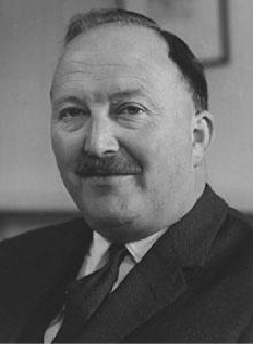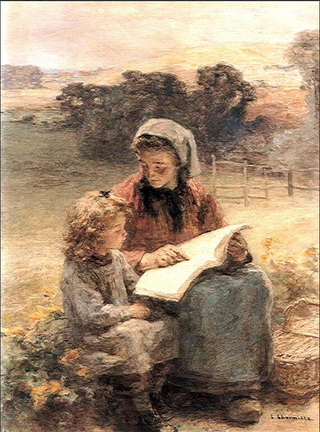Related Research Articles
Whole language is a philosophy of reading and a discredited educational method originally developed for teaching literacy in English to young children. The method became a major model for education in the United States, Canada, New Zealand, and Great Britain in the 1980s and 1990s, despite there being no scientific support for the method's effectiveness. It is based on the premise that learning to read English comes naturally to humans, especially young children, in the same way that learning to speak develops naturally.

Phonics is a method for teaching people how to read and write an alphabetic language. It is done by demonstrating the relationship between the sounds of the spoken language (phonemes), and the letters or groups of letters (graphemes) or syllables of the written language. In English, this is also known as the alphabetic principle or the alphabetic code.
Reading for special needs has become an area of interest as the understanding of reading has improved. Teaching children with special needs how to read was not historically pursued due to perspectives of a Reading Readiness model. This model assumes that a reader must learn to read in a hierarchical manner such that one skill must be mastered before learning the next skill. This approach often led to teaching sub-skills of reading in a decontextualized manner. This style of teaching made it difficult for children to master these early skills, and as a result, did not advance to more advanced literacy instruction and often continued to receive age-inappropriate instruction.
Phonological awareness is an individual's awareness of the phonological structure, or sound structure, of words. Phonological awareness is an important and reliable predictor of later reading ability and has, therefore, been the focus of much research.

Kieran Egan was an Irish educational philosopher and a student of the classics, anthropology, cognitive psychology, and cultural history. He has written on issues in education and child development, with an emphasis on the uses of imagination and the stages that occur during a person's intellectual development. He has questioned the work of Jean Piaget and progressive educators, notably Herbert Spencer and John Dewey.
Kenneth Goodman was Professor Emeritus, Language Reading and Culture, at the University of Arizona. He is best known for developing the theory underlying the literacy philosophy of whole language.
Guided reading is "small-group reading instruction designed to provide differentiated teaching that supports students in developing reading proficiency". The small group model allows students to be taught in a way that is intended to be more focused on their specific needs, accelerating their progress.
High frequency sight words are commonly used words that young children are encouraged to memorize as a whole by sight, so that they can automatically recognize these words in print without having to use any strategies to decode. Sight words were introduced after whole language fell out of favor with the education establishment.
Balanced literacy is a theory of teaching reading and writing the English language that arose in the 1990s and has a variety of interpretations. For some, balanced literacy strikes a balance between whole language and phonics and puts an end to the so called reading wars. Others say balanced literacy, in practice, usually means the whole language approach to reading.

Reading is the process of taking in the sense or meaning of letters, symbols, etc., especially by sight or touch.
Jyotsna Vaid is a Professor of Cognition and Cognitive Neuroscience and Women's and Gender Studies at Texas A&M University. Vaid's research examines the impact of multiple language experience by considering properties of specific languages and variability in when and how multiple languages were acquired by bilinguals. Her research has examined the processing of evidentiality in Turkish, the processing of the impersonal se construction in Spanish, and word recognition in biscriptal readers of Hindi and Urdu. She has published extensively on the cognitive and neural bases of bilingualism. Most notably, Vaid's research in neuropsychology has clarified the role of the two cerebral hemispheres in bilingual language processing; her work shows that early onset of bilingualism is associated with more bilateral involvement in language, in contrast to the greater left hemisphere dominance for language among single language users. Recently she has examined cognitive and psycholinguistic aspects of informal translation experience among bilinguals, or language brokering. Other topics on which she has published include number processing in bilinguals, creative thought, cognitive bases of humor, spatial biases in cognition arising from directional reading habits, self presentation in personal ads, and gender and race disparities in professional visibility in academia.

James Gee is a retired American researcher who has worked in psycholinguistics, discourse analysis, sociolinguistics, bilingual education, and literacy. Gee most recently held the position as the Mary Lou Fulton Presidential Professor of Literacy Studies at Arizona State University, originally appointed there in the Mary Lou Fulton Institute and Graduate School of Education. Gee has previously been a faculty affiliate of the Games, Learning, and Society group at the University of Wisconsin–Madison and is a member of the National Academy of Education.
Victoria Purcell-Gates is an internationally recognized researcher and professor in the field of literacy education. Using both qualitative and quantitative research methods, Dr. Purcell-Gates' research interests include the social and cultural literacy practices experienced by both children and adults.
Gerald Watkins Bracey was an American education policy researcher. He is best known for the annual "Bracey Report" in which he analyzed current trends in education, often in opposition to prevailing educational policies of the day. The reports were published over a seventeen-year period. The last report was unfinished, and his colleagues at the National Education Policy Center conducted the final revisions and published it in November 2009.
Patricia A. Edwards, a member of the Reading Hall of Fame, is a Distinguished Professor of Language and Literacy in the Department of Teacher Education and a Senior University Outreach Fellow at Michigan State University. She is a nationally and internationally recognized expert in parent involvement, home-school-community partnerships, and multicultural, early, and family/intergenerational literacy with a focus on poor and minority children. She served on the International Literacy Association Board of Directors from 1998–2001, as the first African American President of the Literacy Research Association from 2006–2007, and as President of the International Literacy Association from 2010–2011. Edwards also served as a member of the Board of Directors for the American Educational Research Association's (AERA) Family, School, and Community Partnerships Special Interest Group (SIG) from 2014–2016 and was elected to serve as its President-Elect/President from 2016–2020.
The simple view of reading is a scientific theory that a student's ability to understand written words depends on how well they sound out (decode) the words and understand the meaning of those words. Specifically, their reading comprehension can be predicted by multiplying their skill in decoding the written words by their ability to understand the meaning of those words. It is expressed in this equation:
Geneva Gay is an American academic and author. She is an emerita professor at the University of Washington-Seattle.
The American High School Today: A First Report to Interest Citizens, better known as the Conant Report, is a 1959 assessment of American secondary schooling and 21 recommendations, authored by James B. Conant.

John Downing (1922–1987) was a British educational psychologist who started his career as a teacher then worked as an academic from 1960 until his death in 1987. He published over 300 academic papers in his 27-year academic career, specialising in both how children read and how they learn to read. His three main fields of study were the initial teaching alphabet, the psychology of reading and the comparison of reading methods across different languages and cultures. His principle works in each of these fields were Evaluating the Initial Teaching Alphabet, Reading & Reasoning and Comparative Reading. Fundamentally, Downing was an educational psychologist and his main lifetime achievement was the formulation of the cognitive clarity theory of learning to read.

Professor John Downing, an educational psychologist, proposed the cognitive clarity theory of learning to read in a paper which he presented to the annual meeting of the United Kingdom Literacy Association between the 23rd and 28th of July, 1971.
References
- ↑ Cooper, CR and Petrosky, AR. "A Psycholinguistic View of the Fluent Reading Process". Journal of Reading, 20(3):185
- 1 2 Stager, Gary S. "Meet Frank Smith". Retrieved 27 November 2010
- ↑ Walker, L. "Networks and Paradigms in English Language Arts in Canadian Faculties of Education". Canadian Journal of Education, 15(2):128
- ↑ Cooper, CR and Petrosky, AR. "A Psycholinguistic View of the Fluent Reading Process". Journal of Reading, 20(3):186
- ↑ Groff, Patrick. "Research versus the Psycholinguistic Approach to Beginning Reading". The Elementary School Journal, 81(1):53
- ↑ Smith, F. et al. "The Effect of Type Size and Case Alternation of Word Identification". Journal of Psychology, 82(2):248
- ↑ Smith, F. "Ourselves: Why We Are Who We Are". 2006, p. xiii
- ↑ Nystrand, M and Duffy, John. "Towards a Rhetoric of Everyday Life: New Directions on Research in Writing, Text, and Discourse". 2003. p.142
- ↑ Frank Smith Obituary https://www.legacy.com/amp/obituaries/timescolonist/197463181
- ↑ Pettegrew, Barbara. "Untitled Review". The English Journal, 70(7):88
- ↑ Castles, A.; Rastle, K.; Nation, K. (2018). "Ending the Reading Wars: Reading Acquisition From Novice to Expert". Psychological Science in the Public Interest. 19 (1): 5–51. doi: 10.1177/1529100618772271 . PMID 29890888.
- ↑ Adams, M.J. (1996). Beginning to Read: Thinking and Learning about Print. Cambridge, MA: MIT Press.
- ↑ Gough, P.B.; Hillinger, M.L. (1980). "Learning to read: An unnatural act". Bulletin of the Orton Society. 30: 179–196. doi:10.1007/BF02653717. S2CID 143275563.
- ↑ Seidenberg, Mark (2013). "The Science of Reading and Its Educational Implications". Language Learning and Development. 9 (4): 331–360. doi:10.1080/15475441.2013.812017. PMC 4020782 . PMID 24839408.
- ↑ Ludden, David. "Whole Language or No Language? Something is rotten in the state of literacy education". Psychology Today. Sussex Publishers, LLC. Retrieved 29 January 2019.
- ↑ Moats, Louisa. "Whole Language Lives On: The Illusion of Balanced Reading Instruction". LD Online. WETA Public Television. Retrieved 29 January 2019.
- ↑ Hempenstall, Kerry. "Whole Language! What was that all about?". National Institute for Direct Instruction. National Institute for Direct Instruction. Retrieved 29 January 2019.
- ↑ Groff, P. "Guided Reading, Whole Language Style". Archived 27 November 2010 at the Wayback Machine . Retrieved 28 November 2010
- ↑ Stanovich, KE. "Progress in Understanding Reading: Scientific Foundations and New Frontiers". 2000. p. 5;45
- ↑ Nystrand, M and Duffy, John. "Towards a Rhetoric of Everyday Life: New Directions on Research in Writing, Text, and Discourse". 2003. p.123-124
- ↑ Goodman, Yetta M. "Roots of the Whole-Language Movement". The Elementary School Journal, (90):2117
- ↑ Reinking, David. "Untitled Review". Journal of Reading, 35(2):174
- ↑ Smith, F. "Ourselves: Why We Are Who We Are". 2006, p. xiv
- 1 2 Smith, Frank (1976). "Learning to Read by Reading". Language Arts. 53 (3): 297–322. JSTOR 41404150.
- ↑ "Archived copy" (PDF). Archived from the original (PDF) on 24 December 2017. Retrieved 24 December 2017.
{{cite web}}: CS1 maint: archived copy as title (link) - ↑ Understanding Reading - Frank Smith.